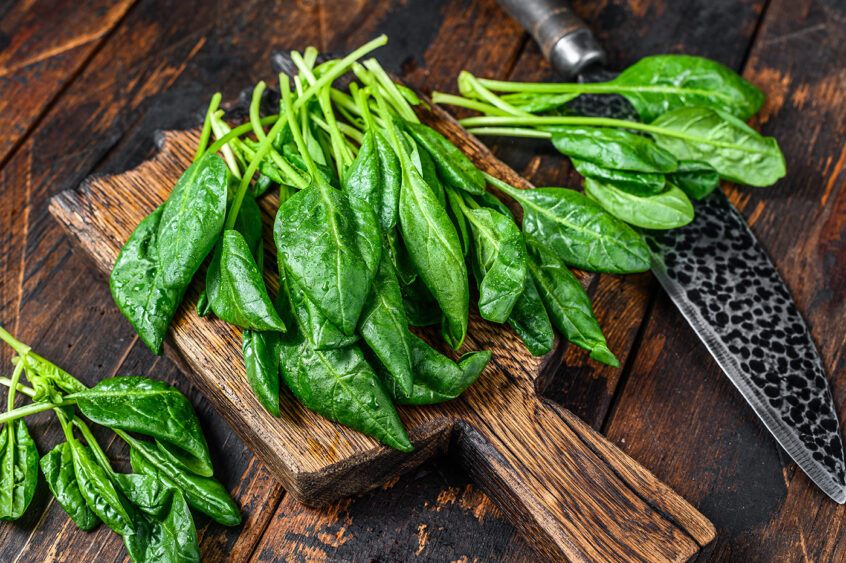Spinach has been around for a long time and was enjoyed by kings and queens in the 16th century in a creamed dish known as Spinach a la Florentine. Some of us may remember a childhood cartoon character, Popeye, that would eat a can of spinach and become instantly strong. Spinach is good, but not quite like that!
Excellent Source of Nutrients
Spinach is an excellent source of non-heme iron, also known as plant-based iron. It is also rich in phytonutrients such as beta-carotene, lutein, and zeaxanthin, and it is loaded with antioxidants that help protect cell structures. Adding spinach to your diet provides a low-calorie, power packed source of valuable nutrition. It is available year-round in fresh, frozen, and canned varieties.
Health Benefits
Heart Health
Spinach is an excellent source of vitamins A and C. These two nutrients are important antioxidants that work to reduce the number of free radicals in the body. Free radicals promote cholesterol oxidation that can do damage to our blood vessels and promote atherosclerosis. Spinach is also a good source of folate and B6, both of which help to reduce homocysteine levels. When elevated, homocysteine can cause damage to arteries.
Eye Health
Vitamin A, abundant in spinach, is known for its role in eye health, especially related to night vision. The concentrated sources of carotenoids in spinach protect the eyes from oxidative damage as well as promote a healthy distribution of epithelial tissue. Those who eat spinach on a regular basis have been found to have lower risk for developing cataracts and age-related macular degeneration.
Cooking
Raw spinach is great in salads and smoothies, but raw spinach contains high levels of oxalates. Oxalates are considered an anti-nutrient and can be linked to various health conditions. This is a good reason to refrain from eating raw spinach every day.
Cooked spinach has fewer oxalates. Unfortunately, cooking spinach causes it to lose some of its vitamins and minerals to heat and water. That’s why taking care not to overcook your spinach is so important. Cooking this delicate green to lightly wilted is typically the best approach to retaining its beautiful color, great flavor, and abundant nutrients, while also breaking down some of the oxalates.
Culinary Variety
Spinach is exceptionally diverse in its ability to pair with other foods. It mixes with other greens for a delightful contribution in color and texture. In a salad, it pairs well with fruits such as oranges and strawberries. Sprinkle a mixture of lemon juice and extra virgin olive oil on top of spinach and fruit salads to blend flavors nicely.
Warmed (lightly cooked) spinach is served with rice, feta cheese, and olives in a Mediterranean fashion. Many cuisines will add pine nuts or walnuts with wilted spinach. In Spain, spinach is cooked with garlic and onions, vinegar, and a pinch of cinnamon. France, on the other hand, adds a pinch of nutmeg. Spinach is truly delightfully versatile!
Histamines
Another reason for some to not eat spinach in large quantities or too often is because of its high potential to cause a histamine response. Histamine is a necessary component of the immune system released when exposed to an antigen. The problem is that some people have a sensitivity to histamines in foods which causes the immune system to exaggerate its response. These folks experience miserable symptoms such as headaches, red and swollen eyes, rash, and many others.
Bottom Line
Eat a little spinach but not too much! Eat a few servings each week, but not every day. Eat a mix of cooked and raw so you can appreciate the benefits of each without the drawbacks. And lastly, don’t expect a meal of canned spinach to turn you into an instant superhero!
Are you sensitive to oxalates or have a histamine intolerance? Connect with A to Zinc Nutrition, LLC for a free assessment to find your food and nutrient path to help you feel better.
For a printable PDF, click here.

